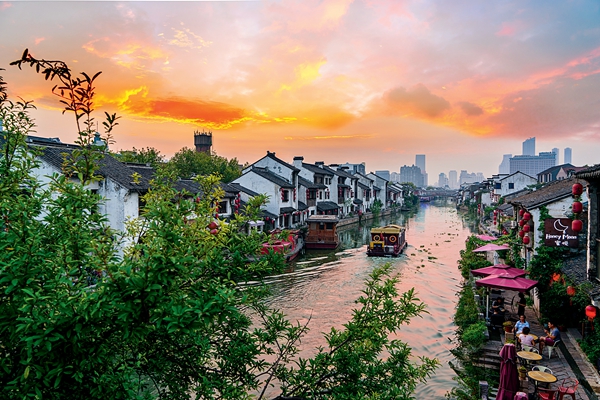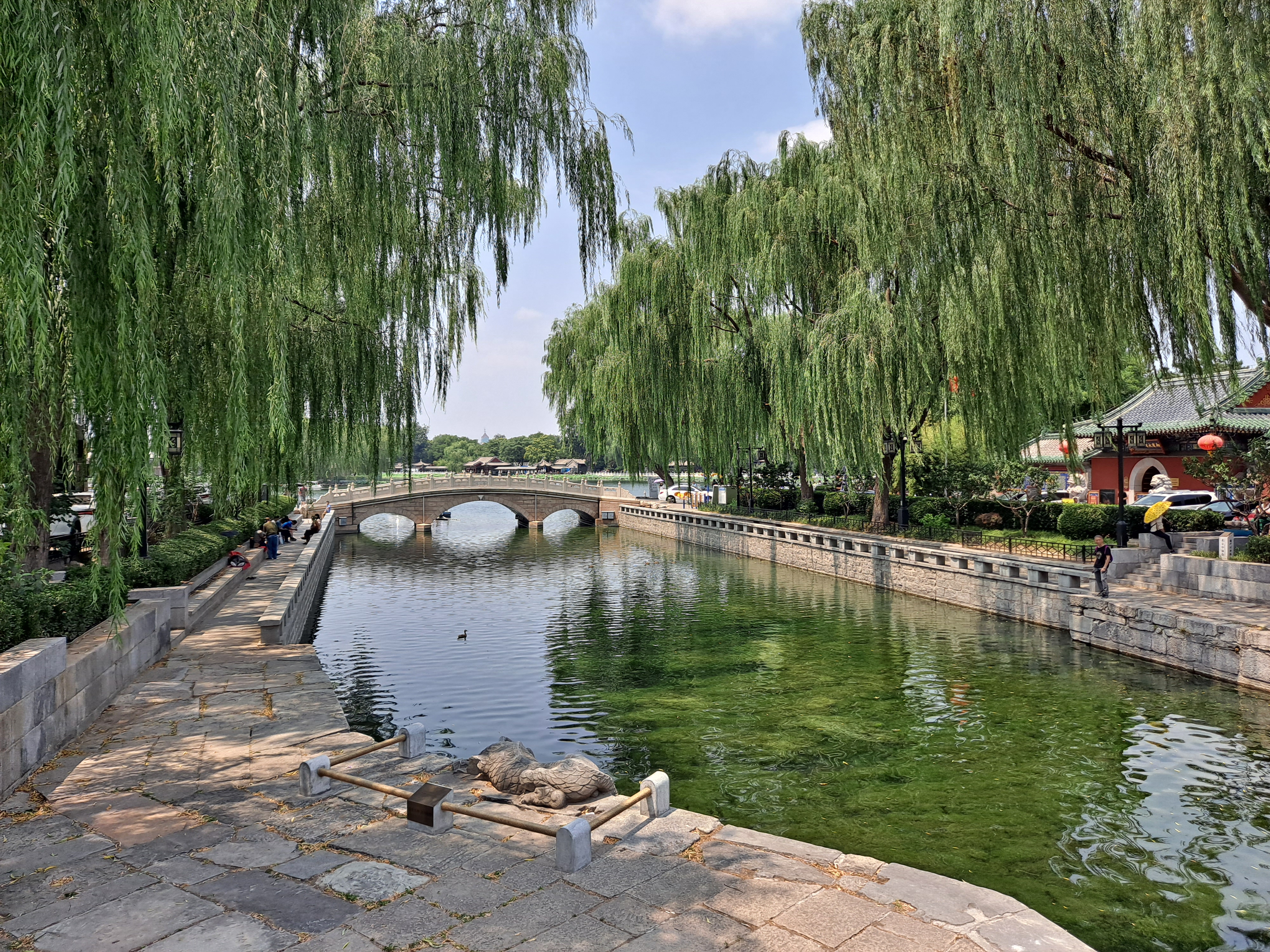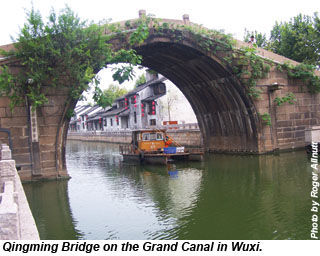Uncovering Wuxi’s Grand Canal History and Cultural Charm

Welcome to Jusha Travel, your go-to source for exploring China’s hidden gems! If you’re a traveler eager to dive into Wuxi Grand Canal History, or a culture enthusiast fascinated by China canal culture, then Wuxi is a destination that promises to captivate your senses. Nestled along the banks of the ancient Grand Canal, this vibrant city in Jiangsu Province offers a blend of historical depth and modern allure, making it a perfect stop on your China cultural tours (https://jusha.travel/?p=363). Here at jusha.travel, we love sharing tips to make your China journey unforgettable, from wandering historic waterways to savoring local delicacies. In this post, we’ll uncover Wuxi’s rich tapestry of cultural heritage, highlighting key attractions and practical advice to help you plan an immersive trip.
The Grand Canal, often called the “lifeline of China,” has shaped the nation’s history for over 2,500 years. For Wuxi visitors, exploring this UNESCO World Heritage site means stepping back in time while appreciating how it influenced trade, culture, and daily life. We’ll weave in insights on Wuxi cultural heritage and must-see cultural attractions in Wuxi, drawing from reliable sources like Britannica (source). Whether you’re a first-time traveler or a seasoned explorer, this guide will serve as your essential Wuxi travel guide, packed with tips to navigate the canals and embrace the local vibe.
The Origins and Evolution of the Grand Canal

The story of Wuxi Grand Canal History begins with one of humanity’s greatest engineering feats—the Grand Canal of China. Stretching over 1,100 miles, it’s the world’s longest and oldest man-made waterway, with origins tracing back to the 5th century BC during the Spring and Autumn period (source). Initially built to connect southern and northern regions for strategic supply lines, the canal evolved under emperors like Yang of the Sui dynasty in AD 609, transforming it into a vital artery for trade and governance.
In Wuxi, this evolution is palpable. Positioned along the canal’s southern stretch, the city flourished as a key junction, linking the Yangtze River delta to northern hubs. Imagine boats laden with rice and silk gliding through these waters, fostering economic ties that shaped China canal culture (https://jusha.travel/?p=497). A fascinating fact: the canal facilitated the transport of massive grain taxes to the capital, which not only boosted Wuxi’s economy but also led to the rise of influential merchant families. For travelers today, walking along these historic paths offers a glimpse into ancient ingenuity. If you’re planning a visit, consider a boat tour at dawn—practical tip: book through local operators for an authentic experience, and don’t forget to check water levels during rainy seasons for safety.
This section of the canal also highlights Wuxi’s role in broader Chinese history. As noted in China Heritage Quarterly (source), the canal’s expansions under various dynasties turned Wuxi into a cultural melting pot, where ideas and goods flowed freely. For culture enthusiasts, this is a prime example of Wuxi cultural heritage, blending Confucian influences with everyday life. To tie it back to modern travel, pack comfortable walking shoes and a reusable water bottle—sustainable practices are key when exploring China’s waterways, aligning with eco-friendly trends we promote at jusha.travel.
Wuxi’s Strategic Importance and Economic Boom

Wuxi’s strategic location on the Grand Canal made it a powerhouse of commerce and innovation, deeply intertwined with Wuxi Grand Canal History. Situated at the intersection of the canal and Lake Tai’s river systems, Wuxi became a major transshipment hub by the Tang dynasty, handling vast quantities of rice and silk (source). This prosperity earned it nicknames like “Little Shanghai,” reflecting its vibrant merchant culture and early industrialization (https://jusha.travel/how-to-explore-chinas-ancient-water-towns-in-style/).
The canal’s economic impact was profound, turning Wuxi into a center for trade that fueled China’s growth. By the 19th century, despite challenges like the Taiping Rebellion, Wuxi adapted, shifting exports to booming ports like Shanghai. Interesting fact: the city’s silk filatures and textile mills, established in the late 1800s, were among China’s first modern industries, driven by canal-facilitated trade. As you explore cultural attractions in Wuxi, such as the historic warehouses now turned museums, you’ll see how this legacy lives on.
For travelers, this means opportunities for hands-on cultural immersion. A practical tip: visit the canal-side markets for fresh local snacks like Wuxi’s famous pork ribs or xiao long bao (soup dumplings), which reflect the fusion of China canal culture with regional flavors. If you’re on a
Exploring Wuxi’s Cultural Heritage and Attractions

Delving into Wuxi cultural heritage reveals the soul of the city, where the Grand Canal serves as a living museum. The canal’s banks are dotted with temples, traditional bridges, and historic neighborhoods that embody the essence of China canal culture (https://jusha.travel/?p=368). For instance, the iconic Qingming Bridge, with its arched design, stands as a testament to ancient engineering and is a must-visit for anyone on a Wuxi travel guide adventure (source).
These cultural attractions in Wuxi offer more than just visual appeal; they provide insights into daily life along the canal. Festivals like the Dragon Boat Race, held annually, celebrate the waterway’s role in community bonding, blending folklore with modern festivities. Cultural insight: the canal influenced Wuxi’s arts scene, with merchant patrons supporting opera and calligraphy that still thrive today. If you’re a foodie, pair your visit with canal-inspired cuisine—try fish from Lake Tai, prepared with spices that echo the trade routes of old (https://jusha.travel/what-makes-guilins-landscapes-chinas-most-stunning-escape/).
To make the most of your trip, here’s a quick list of tips:
–
- Timing: Visit in spring or autumn for mild weather and fewer crowds.
- Transportation: Opt for high-speed trains from Shanghai to Wuxi—it’s a quick, tech-savvy way to travel, showcasing China’s advancements in rail technology (https://jusha.travel/whats-behind-chinas-high-speed-rail-revolution/).
- Engagement: Join a guided tour for deeper stories, or rent a bike to explore at your own pace.
This hands-on approach not only enriches your understanding of Wuxi Grand Canal History but also creates memorable moments, much like the experiences we highlight at jusha.travel.
As we wrap up our journey through Wuxi, it’s clear that the Grand Canal’s legacy continues to inspire. From its ancient origins to its role in modern tourism, Wuxi exemplifies the enduring charm of China canal culture. We’ve explored the canal’s evolution, economic significance, and vibrant cultural attractions, offering a comprehensive Wuxi travel guide for your adventures. Whether you’re marveling at historic bridges or savoring local dishes, this destination captures the heart of China cultural tours.
Here at jusha.travel, we’re passionate about helping you uncover more of China’s wonders—places that blend history, culture, and innovation. As you plan your next trip, remember to share your own Wuxi stories in the comments below, check out our related articles for more tips, or visit jusha.travel for exclusive guides and itineraries. Let’s keep the conversation going and inspire fellow travelers to explore! Safe journeys and happy discoveries.

